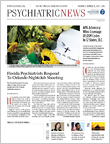Training in psychiatry requires an ever-increasing number of curricular and clinical experiences. In recognition of the complexity of residency education, the American Association of Directors of Psychiatric Residency Training (AADPRT) maintains a number of standing committees that work to support its members. The Psychotherapy Committee was established in recognition of the integral importance of psychotherapy training in the development of psychiatry residents. Its purpose is to serve as a resource for AADPRT members focusing on psychotherapy competencies and their implementation through model curricula and assessment with evidence-based measures. The Psychotherapy Committee shares the philosophy of the Psychiatry Psychotherapy Committee of the Group for the Advancement of Psychiatry and the APA Psychotherapy Caucus that psychiatrists should regard every patient encounter as an opportunity to employ psychotherapy and that residents must be well trained as mandated by the Accreditation Council for Graduate Medical Education in psychodynamic therapy, cognitive-behavioral therapy, and supportive therapy.
Survey data reported in the August 2006 Archives of General Psychiatry by Myrna Weissman, Ph.D., and colleagues and in the September 2012 Academic Psychiatry by D.A. Goldberg, M.D., and me highlight a problem with a wide variability in hours of required supervised clinical work with patients in residency education, with cognitive-behavioral therapy and psychodynamic therapy frequently performed on only one to two patients throughout the resident’s training. The psychotherapy committee also surveyed residents and training directors regarding the need for psychotherapy resources and plans to work to develop such materials and advocate for more robust clinical experience in training.
Specific resources developed by the psychotherapy committee thus far include a standardized slide set for teaching residents in psychotherapy for psychosis, a guide for videotaping therapy sessions, a handout titled “Making the Most of Psychotherapy Supervision,” and the manual “3-Step Supportive Psychotherapy: A Brief Supervisory Manual for Busy Services.”
Residency educators now have the requirement to assess trainees on the basis of “milestone” attainment. (For more information on milestones, click
here.) Prior to the development of milestones, the committee produced the resource document “Psychotherapy Benchmarks” via literature review and expert consensus to specify those skills expected during the developmental progression through residency, particularly in those common elements that are critical to the process. This document was significantly influenced by the Y-model for psychotherapy education as articulated by Eric Plakun, M.D., and colleagues in the January 2009
Journal of Psychiatric Practice; it uses common elements in cognitive-behavioral therapy and psychodynamic therapy to teach core skills before branching out into the techniques specific to each model. “Psychotherapy Benchmarks” was used as a source for the patient care milestone in psychotherapy.
The committee subsequently developed an assessment tool for psychotherapy milestones, the AADPRT Milestone Assessment of Psychotherapy (A-MAP). The A-MAP is designed to be used by a supervisor-supervisee pair watching a 10-minute videotape segment from a psychotherapy session conducted by the supervisee. The observation anchors and targeted questions map onto the milestone. Multiple groups have trained in the A-MAP at national meetings, in grand rounds presentations, and in faculty development webinars.
Use of the A-MAP among residency programs continues to grow. The University of Texas Southwestern has developed standardized videos for training faculty members to use the A-MAP. There is also a version for child and adolescent psychiatry (CAP-MAP). Pilot work with the instrument indicates that it stimulates richer discussions and teaching about the fundamentals of the therapeutic alliance, empathy, and boundaries and provides more meaningful evaluations. The work of the committee will be posted on the
AADPRT website, which is currently under construction.
One outcome of the committee’s work is a renewed interest in psychotherapy topics at AADPRT’s annual meeting that should energize psychotherapy teaching in residency programs. This year, three of the 10 highest rated and two of the 10 best attended workshops had psychotherapy content. Another outcome is the growth of the committee from a handful of participants to a standing-room only (and hard-working) crowd. ■

